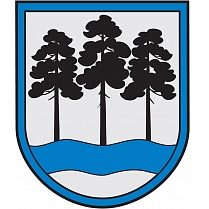In the last ten years, the number of students attending vocational and secondary education institutions has gone down by 11.1% or 3 448 people, according to data from the Central Statistical Bureau of Latvia (CSP).
At the same time, as the demand for digital skills increases, so does the number of students in natural science, mathematics and IT education courses.
In the 2023/2024 school year there were 27 600 students attending vocational education institutions, which is 165 students fewer than a year prior.
In 2023 a total of 10 900 entrants were enrolled to various vocational education courses, which is 3.3% or 347 students more than in the previous period. The proportion of men still exceeds the number of women – 55% or 6 039 students were men and 45% or 4 936 were women.
CSP reports that courses in demand the most were engineer sciences, manufacturing and construction – 4 200 or 38.2% of all enrolled students were studying in these courses. Service-related courses were in high demand as well (2 300 students or 21%).
In the last ten years there have been changes in the labour market, which is reflected in the choice of vocational courses. Compared to 2013, the proportion of students has increased for natural sciences, mathematics and IT courses (by 4.5 percentage points), humanitarian sciences and arts (by 4.2 percentage points) agriculture-related courses (by 3 percentage points).
The biggest drop in the number of students was observed for service-related courses
(by 6.1 percentage points) and social sciences, commercial sciences and law (by 4.6 percentage points).
Compared to the previous year, an increase of the number of students was observed for services (by 219 students or 10.5%), humanitarian sciences and art (by 1124 or 9.5%), as well as engineering sciences, manufacturing and construction courses (by 128 or 3.1%).
The biggest drop in the number of students was observed for social sciences, commercial sciences and law (78 students or 9.5%) and healthcare and social welfare (25 or 3.7%) courses.
The average age of students was 19.4 years. The majority (84.2%) of students were under 20 years (included), 6.6% were 21 to 30 years of age, and 2.3% were older than 50 years.
Compared to the previous year, the number of students decreased the most in service programs – by 364 or 5.9%, and in social science, commercial science and law programs – by 41 or 1.9%. The largest increase is in natural sciences, mathematics and information technology programmes – by 155 pupils or 5% and in health and social welfare programmes – by 22 or 2.8%, notes CSP.
Demand for digital skills continues going up – compared to 2013, the number of students in natural science, mathematics and IT courses has increased by 76% or 1 402 students. Almost as big of an increase was observed for the number of students in agricultural courses – by 75.7% or 629 students.
There has been a significant decrease in the interest to study social sciences, commercial science and law programs, where the number of students has decreased by 50.8% or 2 158 students. Since 2013, the interest in acquiring service programs has also decreased – the number of students has decreased by 25.6% or 1 989 students.
Results show that service-related courses are popular the most among women (mainly hotel and restaurant, beauty services), in which 31.9% or 3 800 students are women. 27.7% or 3 300 women study humanitarian sciences and art courses, 13.9% or 1 700 women study social sciences, commercial sciences and law. 13.3% or 1 600 women study engineering sciences, manufacturing and construction.
CSP reports that in 2023 a total of 5 900 student had completed their studies in vocational education courses, which is 2% or 120 students fewer when compared to 2022. The number of students last year was the smallest in the last 20 years. When compared to 2003, the number of students has gone down by 53%.
At the same time, 52.3% or 3 100 graduates were men. Similarly to 2022, 33% or 1 900 graduated in engineering, manufacturing and construction courses. 1 400 or 23.4% graduated in service field.
Also read: Kazāks: European Central Bank will soon start lowering interest rates
Follow us on Facebook and X!

